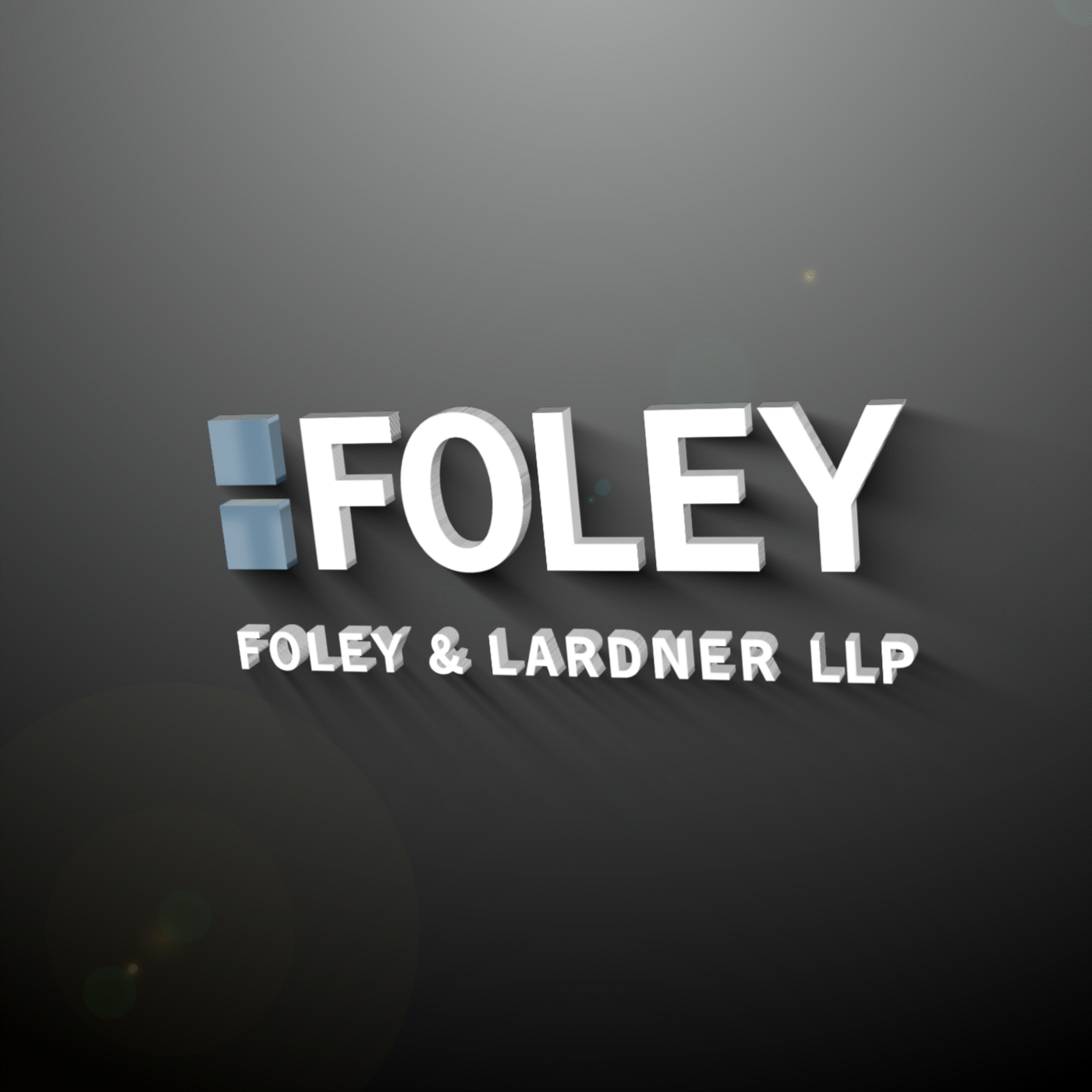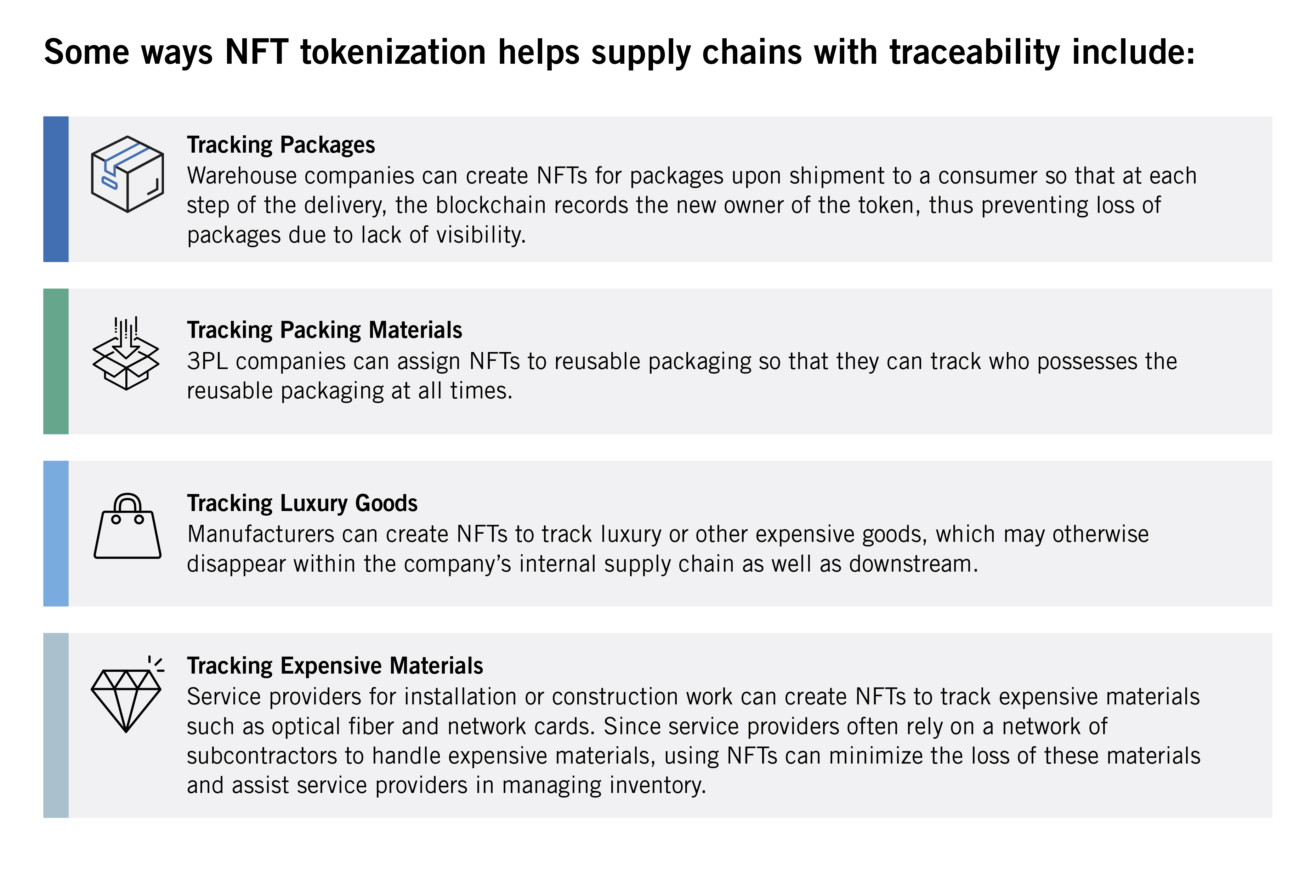
What do teen digital artists, Tom Brady, Doja Cat, and Foley & Lardner LLP all have in common? They are all trending in popularity for their use of NFTs.
Jaiden Stipp is a digital artist, who at only 15 years old sells pieces of his digital artwork as NFTs.1 “Forever Colored,” one of Stipp’s top-selling NFTs located here, sold for 20 ETH (ETH is the acronym for Ether, a form of cryptocurrency on the Ethereum blockchain). At the time, the 20 ETH from the sale of Stipp’s “Forever Colored” traded for $30,000 USD, and a month after the sale, traded for closer to $60,000 USD.
Tom Brady is capitalizing on the popularity of NFTs through his launch of the startup NFT platform, Autograph, located here.2 Tom Brady has teamed with the Hollywood studio Lionsgate and the sports betting site DraftKings to launch movie and sports-related NFTs.3 In August of this year, Simone Biles announced she would release her first ever NFT collection on Autograph.4
Doja Cat launched her “Planet Doja” collection of NFTs in several tiers of tokens located here. Doja Cat’s gold-tier NFTs come with a chance to win Doja Cat concert tickets, platinum-tier NFTs come with a chance to win VIP Doja concert tickets and other perks, and diamond-tier NFTs come with guaranteed VIP concert tickets.5 The highest tier NFT, which comes with an all-expenses paid VIP experience for two fans to one of Doja Cat’s concerts, sold for $188,888 USD.6
Foley & Lardner LLP is one of the first AmLaw 50 law firms to create, mint, list, sell and pursue the secondary market of an NFT live during the webinar entitled “Minting & Selling an NFT | Live Demo & Legal Analysis,” presented by Foley attorneys Patrick Daugherty, Laura Ganoza, Jonathon Israel, Andrew Lee, Louis Lehot, Byron McLain, Eric Sophir, and Catherine Zhu.7

Foley’s First NFT
In addition, Foley represented the Utah Jazz in launching its Jazz NFT program, JAZZXR (where JAZZXR NFT owners receive exclusive access to a virtual tour of the Jazz’s locker room using virtual reality technology),8 and the Milwaukee Bucks on its NFT launch (which provided a limited edition series of digital artwork commemorating the Bucks’ 1971 NBA championship).9
What is an NFT?
NFT is short for “non-fungible token.” Fungibility refers to the ability of an item to be interchanged with other items of the same type. Cryptocurrency coins, for instance, are fungible because cryptocurrency coins are interchangeable—each coin is the same. On the other hand, NFTs are non-fungible because they are unique tokens (representing digital assets) that cannot be interchanged with other tokens.
When an NFT is minted, the NFT is recorded onto the blockchain. Due to the nature of blockchain, NFTs contain immutable data stored across a distributed ledger. This means that no one can unilaterally modify the record of ownership associated with an NFT, nor can anyone make another copy of an NFT.
While the media has recently highlighted NFT use for art and other high-end collectibles, NFTs have other valuable applications. For instance, users can mint NFTs for recording ownership of any unique asset. Users can even mint NFTs corresponding to items in the physical world, such as a deed to a car or a concert ticket. Those NFTs can be used to conduct transactions or represent those items in a virtual environment.
Uses for NFTs in Supply Chain
NFTs work for supply chain purposes because companies are particularly concerned with maintaining trustworthy digital data related to their physical world assets. Therefore, companies can benefit by using NFTs to represent their physical assets digitally. Some ways in which NFTs address supply chain needs are in the areas of tracing products through supply chains, identifying product origin and authenticating ownership, and verifying product certifications.
1. Traceability
Because NFTs can represent real world objects, supply chains can use NFTs to track a variety of products and materials. To track physical world objects via NFTs, the owner must create a digital representation of the physical object on the blockchain so that transactions related to the physical object can be safely stored and tracked.

2. Product Origin and Authentication
Because NFTs contain an immutable record of transactions, third parties can easily confirm the origin of a physical world product connected to the NFT as well as current and past owners of the product connected to the NFT. Programmers can even design NFTs to automatically kick a royalty back to the original creator of the NFT every time the NFT is resold.
of the NFT every time the NFT is resold.
For instance, the luxury watch brand, Breitling, introduced an NFT passport for each of its watches, which allows customers to receive the physical watch along with a digital version of the watch.10 Customers can then use the digital passport to verify authenticity of their Breitling watch, prove their ownership of their Breitling watch, and transfer ownership of their Breitling watch upon resale.11 Breitling has also tied the digital passport to its warranty program, allowing owners to track repairs to their watches.12 Breitling plans to add functionality to the digital passport to allow users to extend the warranty period and add theft or loss insurance.13
3. Product Certifications
The modern-day consumer is selective about product certifications. As a result, providing consumers with trusted certifications such as “organic” and “fair trade” can increase sales. To accomplish this, third party certifiers for product standards or labor safety requirements could mint an NFT with the appropriate certification onto the blockchain, which supply chain members would pass downstream until it reaches the end user in the supply chain who can ultimately access the certification via a web link.14
Legal Issues Relating to NFTs
Largely, governments have not yet regulated NFTs. Still, NFTs pose a handful of legal issues, some of which are particularly applicable to supply chain uses of NFTs, including:
-
- Terms and Conditions. Purchasers should pay attention to any standard terms and conditions applicable to the sale of an NFT, which could apply not only to the NFT itself, but also to any underlying physical or digital asset. If the NFT represents a physical good sold by a merchant to a consumer-purchaser, the seller will want to set forth terms and conditions governing issues such as redemption, warranties, return policy, and product defect, to avoid ambiguity and disputes over what rights the purchaser is entitled to with respect to the physical good. Merchants commonly provide consumer-purchasers with a web link to the terms and conditions related to the NFT.
-
- Transfer of Intellectual Property. In the U.S., a copyright owner owns the exclusive rights to his or her own work.15 Therefore, the intellectual property right related to an NFT does not automatically transfer with the sale of an NFT. Instead, the original owner selling an NFT must indicate upon minting, which intellectual property rights, if any, will transfer to the purchaser of the NFT.
- Royalties. U.S. law may not entitle an original owner to resale royalties, but sellers may set up NFTs with smart contracts to provide automatic royalties to the original owner upon resale.16 One potential challenge is to counter efforts by resellers that attempt to get around a programmed royalty fee by reselling the NFT on a different platform than the NFT was minted on.
Although NFTs are still nascent, they could provide companies with the opportunity to improve the efficiencies of their supply chains. The applicability of NFTs in supply chain are becoming increasingly apparent as companies continue to explore NFT uses and contribute to adoption of NFTs and other blockchain solutions.
——————————————————–
1 Bruner, Raisa, Teen Artists Are Making Millions on NFTs. How Are They Doing It? Time (September 7, 2021).
2 Steigrad, Alexandra, Tom Brady’s NFT Platform Autograph Partners with Lionsgate, DraftKings, NY Post (July 21, 2021).
4 Beer, Tommy, Simone Biles to Release Her First NFT Collection Tuesday, Cashing in on Booming Market, Forbes (August 31, 2021).
5 Hissong, Samantha, Doja Cat Gets Into the NFT Game, RollingStone (September 8, 2021).
6 Id.; The Rise of Planet Doja, OneOf, (last retrieved September 23, 2021).
7 Minting & Selling an NFT | Live Demo & Legal Analysis, Foley & Lardner LLP (September 14, 2021).
8 Foley Assists Utah Jazz in Launch of Digital NFT with Virtual Locker Room Access, Foley & Lardner LLP (September 24, 2021).
9 Foley Assists Milwaukee Bucks in Launch of 1971 Championship NFT Collection, Foley & Lardner LLP (June 16, 2021).
10 Girod, Stephane, Breitling Shows Other Luxury Brands How to Future Proof With Agility, Forbes (August 27, 2021).
11 Breitling Becomes the First Luxury Watchmaker to Offer a Digital Passport Based on Blockchain for All of its New Watches, Breitling (October 13, 2020).
14 Ricardo Borges dos Santos et al., Third Party Certification of Agri-Food Supply Chain Using Smart Contracts and Blockchain Tokens, MDPI, Sensors 2021.
15 U.S. Copyright Act §106
16 Resale Royalty Right, U.S. Copyright Office (last retrieved November 6, 2021).


